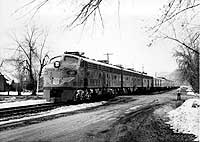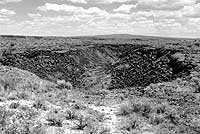|
Page
173
|
Shoshone remained the principal entry point for railroad services to the Wood River mines and communities, being the branch line terminal for both the Ketchum and Hill City lines. The town was the point of origin during the 1880s and 1890s for tours to Shoshone Falls, but with the development of farming lands in the Twin Falls area shortly after 1900, this business ceased. After Sun Valley was built in the 1930s, passengers bound for Sun Valley for skiing were transported from Shoshone by bus.
Sheep and cattle raising have become the major industries of Lincoln County, of which Shoshone is the county seat. Railroad operations have gradually nearly disappeared. Shoshone remains a stop for Amtrak trains (in the middle of the night, as usual) affording passenger service to the Wood River and Magic Valleys.
Ketchum. The Minnie Moore Mine was in active use until 1970. The entire production of the Wood River mines is over $62 million.
 |
 |
 |
|
(left) Abandoned Oregon Short Line railroad bridge over the Wood River, south of Ketchum. The bridge is now used by a bike trail system, (March, 1993). (center) Special Union Pacific passenger train at Bellevue, 1972. Train is composed of both single and double deck cars, and powered by cab-style General Motors, Electromotive Division Diesel engines. Dick Beardsley Collection, Community Library, Ketchum, Idaho, Photo number 1025; used by permission. (right) Collapsed lava tube north of Shoshone, (June, 1992). |
||